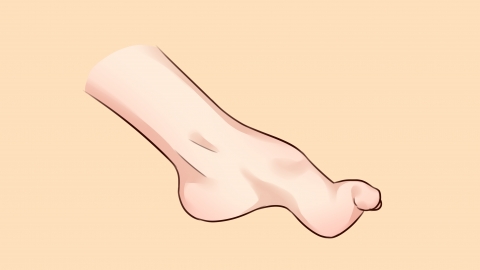What causes pain in the sole of the left foot, and how should it be treated?
Generally, the main causes of pain in the left foot sole include overexertion, ill-fitting shoes, plantar fasciitis, heel spurs, and gouty arthritis. Patients can choose appropriate treatments such as conservative management, medication, or surgery based on their specific conditions. Detailed analysis is as follows:
1. Overexertion
Prolonged standing, walking, or intense physical activity can place continuous strain on the muscles and fascia of the left foot sole, leading to accumulation of metabolic byproducts and resulting in pain. Reduce weight-bearing on the left foot, rest appropriately, soak feet in warm water to improve circulation, massage the soles to relax muscles, and avoid maintaining the same posture for extended periods.
2. Ill-Fitting Shoes
Wearing shoes that are too tight, narrow, or have overly rigid soles may compress the soft tissues of the left foot sole, impair local blood circulation, and cause pain. Switch to spacious, soft shoes with arch support, and avoid high heels or pointed-toe shoes to allow the sole of the left foot to fully relax.

3. Plantar Fasciitis
Repeated strain and microtrauma to the plantar fascia lead to aseptic inflammation, which irritates nerves and causes pain in the left foot sole—often worse in the morning or after walking. Under medical guidance, patients may take medications such as celecoxib capsules, diclofenac sodium sustained-release tablets, or eperisone hydrochloride tablets. Combining these with plantar fascia stretching exercises is recommended. After pain relief, using arch supports can help stabilize the foot.
4. Heel Spur (Calcaneal Spur)
Bony growths (spurs) on the calcaneus can irritate surrounding plantar fascia and soft tissues, causing pain in the left foot sole. Pain worsens during walking due to friction between the spur and adjacent tissues. Under medical supervision, medications such as ibuprofen sustained-release capsules, naproxen tablets, or prednisolone acetate tablets may be used. If conservative treatment fails, surgical removal of the heel spur may be necessary. Avoid early weight-bearing after surgery.
5. Gouty Arthritis
Abnormal uric acid metabolism leads to deposition of urate crystals in the joints of the left foot sole, triggering an inflammatory response characterized by redness, swelling, and pain. Under medical guidance, medications such as colchicine tablets, allopurinol tablets, or febuxostat tablets may be prescribed. During treatment, avoid high-purine foods and drink plenty of water to promote uric acid excretion.
In daily life, limit walking and standing time to prevent overuse; wear properly fitting shoes to protect foot tissues; perform regular foot stretching exercises to enhance muscle flexibility; maintain a healthy weight to reduce pressure on the soles; and follow a balanced diet to prevent elevated uric acid levels.




